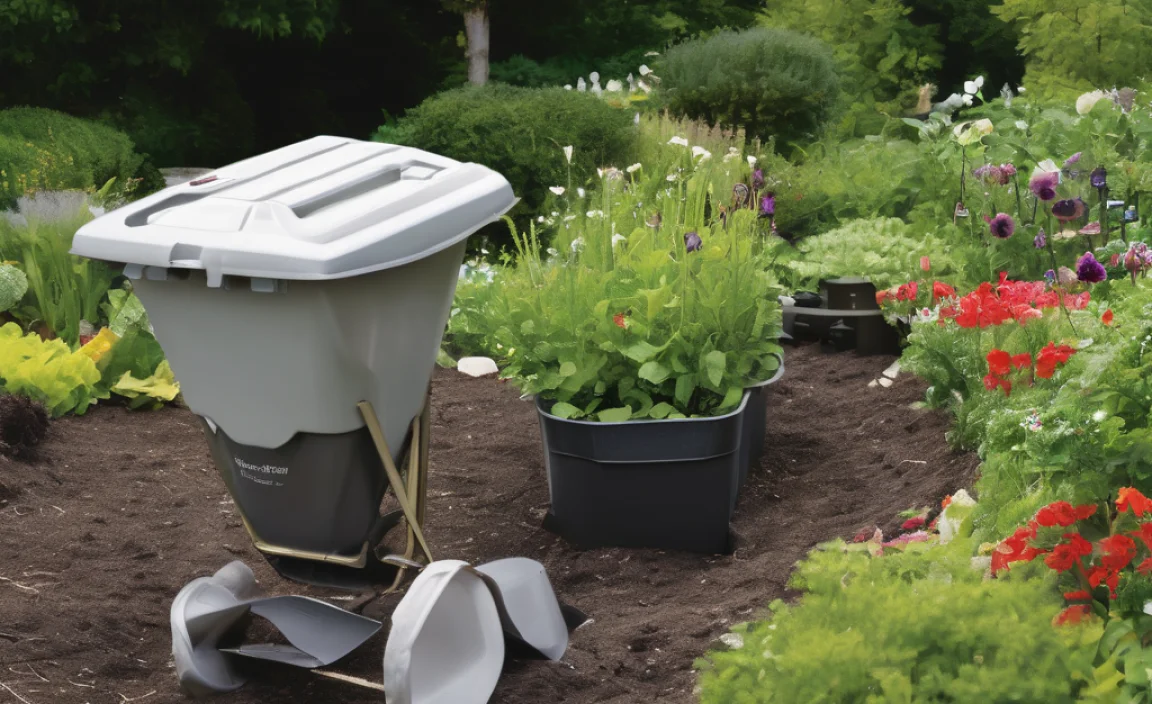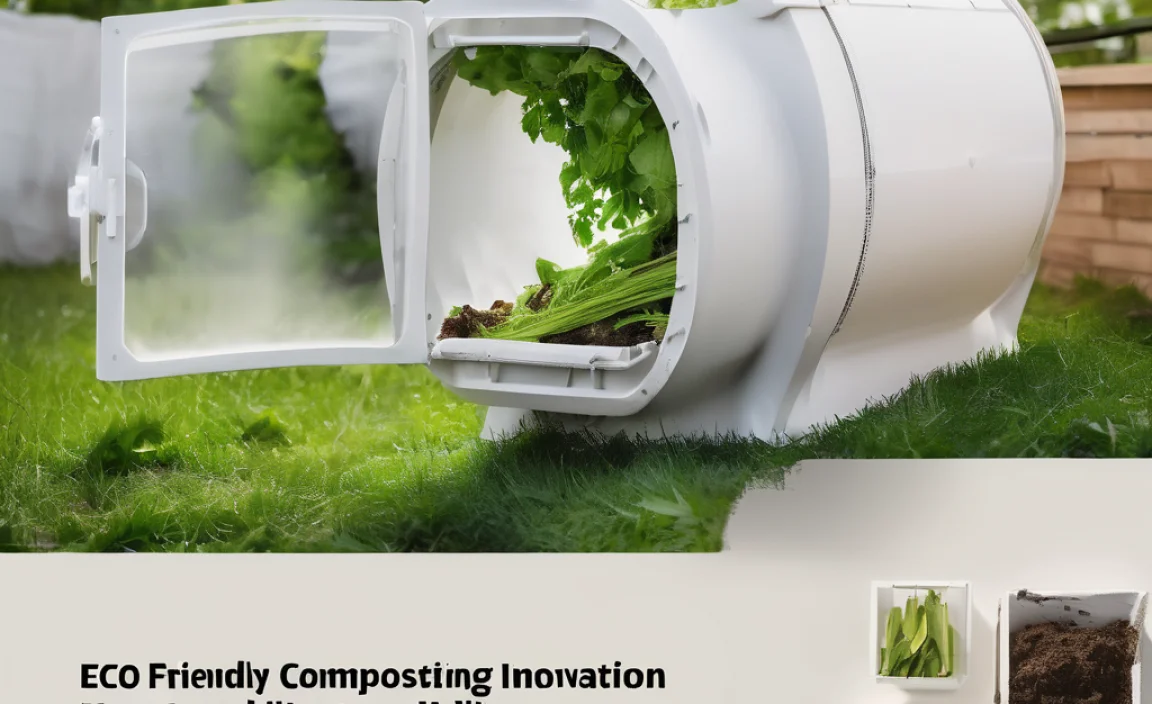Hey there, compost pals! Troy D Harn here, your go-to neighbor for all things home and garden. Ever peek into your compost bin and find it feels more like desert sand than damp earth? Yep, compost too dry is a frustration many of us face. It can slow down decomposition and make you wonder if all your hard work is going to waste. Don’t sweat it! I’ve got some simple, practical tips to get your compost pile back to its happy, moist self. Let’s dig in and fix this together.
Why Does Compost Get Too Dry? Understanding the Thirst
Before we start watering, it’s good to know why your compost pile might be getting parched. Think of your compost pile like a living, breathing thing. It needs the right balance of ingredients to work its magic. When things get too dry, the tiny microbes that are chowing down on your food scraps and yard waste can’t do their jobs efficiently. They need moisture to thrive!
Common Culprits Behind a Dry Compost Pile
- Too Much Brown Material: Browns are your carbon-rich materials like dry leaves, shredded cardboard, and straw. While essential for fluffiness and air circulation, too many browns without enough greens (nitrogen-rich materials like kitchen scraps and grass clippings) can lead to a dry pile.
- Not Enough Water Added: Especially in dry, hot weather, or if your compost bin is in direct sun, moisture can evaporate quickly. You might need to actively add water.
- Poor Aeration: While it might seem counterintuitive, a pile that’s too compact and doesn’t get enough air can sometimes dry out because water struggles to penetrate.
- Location, Location, Location: A compost bin placed in a very sunny, windy spot will dry out much faster than one in a shady, sheltered location.
- Infrequent Turning: When you turn your compost, you help redistribute moisture. If it sits for too long without being turned, the outer layers can dry out significantly.
The Ideal Compost Moisture Level: A Simple Test
So, how do you know if your compost is just right? It’s surprisingly simple! The goal is for your compost to feel like a well-wrung-out sponge. Let’s do a quick check:
- Grab a handful of your compost material.
- Squeeze it firmly in your hand.
- If it feels like a damp sponge — a couple of drops of water might come out when you squeeze hard, but it holds its shape without dripping excessively — you’ve hit the sweet spot!
- If it feels dry and crumbly and doesn’t hold its shape, it’s too dry.
- If water pours out when you squeeze, it’s too wet (but don’t worry, we’ll cover that in another post!).
Essential Tips: How to Revive a Dry Compost Pile
Don’t despair if your compost pile is feeling a bit parched. Bringing it back to life is usually straightforward. Here are my top, tried-and-true methods for rehydrating your compost.
1. Add Water – The Obvious (But Important!) Step
This is the most direct solution. If your compost is too dry, it needs more moisture. But how much and how to do it right?
- Use a hose with a gentle spray nozzle: You don’t want to blast your pile and create a muddy mess. A soft shower is perfect.
- Incorporate as you add water: As you sprinkle water, use a pitchfork or a compost aerator to gently mix it in. This helps distribute the moisture evenly throughout the pile, rather than just soaking the outer layers.
- Water in layers (if possible): If you’re adding new materials, lightly water them before adding them to the pile. This way, new additions are already starting with the right moisture content.
- Consider a watering can: For smaller bins or more targeted watering, a watering can can be very effective.
2. Introduce More “Greens” (Nitrogen-Rich Materials)
Green materials are not only high in nitrogen but also tend to have a higher moisture content than dry brown materials. Adding more greens can help rehydrate your pile and also give those hardworking microbes the food they need.
- What to add: Fresh kitchen scraps (fruit and vegetable peels, coffee grounds, tea bags), fresh grass clippings, plant trimmings, and even manure (if you have access to it).
- Chop them up: Smaller pieces break down faster and help release moisture more readily.
- Layering is key: Try not to dump a huge pile of fresh greens all at once. Mix them in with existing materials or layer them with a bit of brown material to prevent them from becoming matted and anaerobic.
3. Mix in Moisture-Rich Materials
Some materials naturally hold more moisture than others. If you have them available, these can be great additions to a dry pile.
- What to look for: Wet leaves (if it’s rained recently and you can collect them before they dry out completely), damp straw, spent brewery grains, or even seaweed (rinse it first to remove excess salt).
4. Turn Your Compost Pile Thoroughly
Turning is like giving your compost pile a good shake-up. It aerates the pile, which is crucial for decomposition, and it also helps to distribute any added moisture throughout the entire mass. If you’ve added water, turn the pile a few hours later to ensure it penetrates all levels.
- How to turn: Use a pitchfork or a compost aerator to dig into the pile and move material from the outside to the inside, and from the top to the bottom. Aim to mix things up as much as possible.
5. Consider Your Compost Bin Type and Location
The enclosure and where it sits play a big role in moisture levels.
| Bin Type | Pros for Dryness | Cons for Dryness |
|---|---|---|
| Open Pile | Easy to water and turn, good air circulation. | Can dry out very quickly in sun/wind. |
| Stationary Bin (e.g., wooden slats, plastic bin with lid) | Lid can help retain moisture. Enclosed nature offers some protection. | Can be harder to water evenly; may need turning through a door/hatch. |
| Tumbler Bin | Sealed unit helps retain moisture. Easy to turn, which mixes in moisture. | Can be difficult to judge moisture levels without stopping and emptying a bit. |
If your bin is in a very sunny or windy spot, consider moving it to a more sheltered location if possible. A shady spot under a tree or on the north side of your house is often ideal. You can also create a temporary windbreak with some old planks or fabric if moving the bin isn’t an option.
6. Cover Your Compost Bin (When Appropriate)
While good aeration is important, sometimes a bit of cover can help retain moisture. For open piles or bins that don’t have lids, you can use a tarp, a piece of old carpet, or even a layer of straw on top. This helps reduce water evaporation from direct sun and wind.
7. Be Patient and Keep Monitoring
Composting is a natural process, and sometimes it just needs a little nudge. After you’ve added water and turned your pile, give it a few days and check the moisture level again. You might need to repeat the watering process a couple of times until it’s consistently at that “damp sponge” consistency.
What NOT to Do When Your Compost is Too Dry
Just as important as knowing what to do is knowing what to avoid. Here are a few pitfalls to steer clear of:
- Drenching it: Avoid turning your pile into a mud pit. Too much water can suffocate the microbes and lead to smelly, anaerobic conditions.
- Ignoring it: A dry pile won’t magically rehydrate itself, especially if the weather stays hot and dry. Consistent attention is key.
- Adding only dry brown materials: If your pile is already dry, adding more dry leaves or cardboard will only make the problem worse. Balance is key.
- Composting hydrophobic materials: Some very dry, waxy materials like very old, dried-out leaves can be difficult for water to penetrate. Chop them up well or pre-soak them slightly before adding them.
The Balance of Compost: Greens vs. Browns
Getting the right mix of “greens” (nitrogen-rich) and “browns” (carbon-rich) is fundamental to successful composting. Think of them as the fuel and the air for your compost pile’s engine. When your compost is too dry, it often means you’ve leaned too heavily on the “browns,” or the “greens” you’ve added have already dried out. The ideal ratio is generally around 2 to 3 parts browns to 1 part greens by volume.
Here’s a quick rundown of what falls into each category:
| Greens (Nitrogen-Rich) | Browns (Carbon-Rich) |
|---|---|
| Fruit and vegetable scraps | Dry leaves |
| Coffee grounds and tea bags | Shredded newspaper and cardboard |
| Fresh grass clippings | Straw and hay |
| Plant trimmings (non-weedy) | Wood chips and sawdust |
| Manure (herbivore) | Eggshells (ground) |
| Seaweed | Paper towels (unbleached) |
When your compost is too dry, it’s a clear sign that you’re likely lacking in the moisture content, which can be directly related to either not enough green material or the brown material being too dominant and dry. Aim to add more greens, focusing on those with higher moisture content. For more on the science of composting, you can check out resources from institutions like the Environmental Protection Agency (EPA) which offers great insights into organic waste management.
Quick Summary: When Compost is Too Dry
If you’re looking for a quick recap, here’s the gist of how to fix a dry compost pile:
- Check Moisture:</strong

I am passionate about home engineering. I specialize in designing, installing, and maintaining heating, ventilation, and air conditioning systems. My goal is to help people stay comfortable in their homes all year long.



